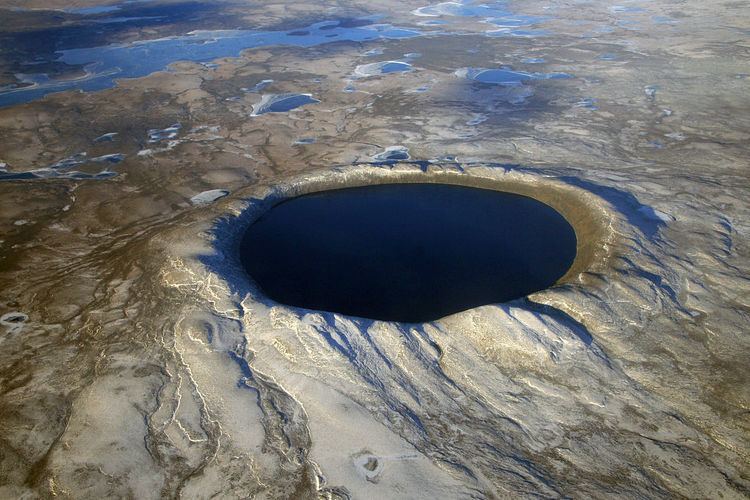 | ||
The Ch'ing-yang event of 1490 (also Ch'ing-yang, Chi-ing-yang or Chíing-yang meteor shower) is a presumed meteor shower or air burst in Qìngyáng (Ch'ing-Yang, simplified Chinese: 庆阳; traditional Chinese: 慶陽) in March or April 1490. The area was in the district of Shaanxi (陕西, now part of Gansu 甘肃 Province). If a meteor shower did occur, it may have been the result of the disintegration of an asteroid during an atmospheric entry air burst.
Contents
A large number of deaths were recorded in historical Chinese accounts of the meteor shower, but have not been confirmed by researchers in the modern era. In the same year, Asian astronomers coincidentally discovered comet C/1490 Y1, a possible progenitor of the Quadrantid meteor showers.
Meteor shower
At least three surviving Chinese historical records describe a shower during which "stones fell like rain", killing more than 10,000 people. At least one report of the event is found in the official History of the Ming Dynasty, and other journal records which describe the event are also generally considered reliable. But the official Ming Dynasty history omits the number of casualties, which has been frequently either doubted or discounted by present-day researchers.
Due to the paucity of detailed information and the lack of surviving meteorites or other physical evidence, researchers have also been unable to definitively state the exact nature of the dramatic event, even examining the possible occurrence of severe hail. However Kevin Yau et al. of NASA's Jet Propulsion Laboratory did note several similarities of the Ch'ing-yang meteor fall to the Tunguska event, which would have destroyed a highly populous district.
One surviving account records:
"Stones fell like rain in the Ch’ing-yang district. The larger ones were 4 to 5 catties (斤, about 1.5 kg), and the smaller ones were 2 to 3 catties (about 1 kg). Numerous stones rained in Ch'ing-yang. Their sizes were all different. The larger ones were like goose's eggs and the smaller ones were like water-chestnuts. More than 10,000 people were struck dead. All of the people in the city fled to other places."
One source of Chinese astronomical information of celestial events, the Zhongguo gudai tianxiang jilu zongji (Complete collection of records of celestial phenomena in ancient China) records ten works that discuss the March–April 1490 event, including the official History of the Ming Dynasty. Additionally there are records of it in local gazettes and histories of the region. The History of Ming work (the 明史, or Míng Shǐ) states only that there was a rain of uncountable stones of various sizes. The large objects were as big "as a goose egg, and the small ones were the size of the fruit of an aquatic plant". The date given was the third lunar month of 1490, which translates as March 21 to April 19, 1490.
Although the Ming Dynasty history did not record the number of deaths or injuries, other sources do. One semi-official document recorded that a provincial Shaanxi official reported there had been a rain of stones that weighed as much as 4–5 jin (市斤), down to 2–3 jin (modern jins being 605 grams). The number of deaths in this account was in the several tens of thousands. The semi-official report and two others date the event to the second lunar month with one source dating the event as April 4, 1490, part of the 3rd lunar month.
Coincidental comet
In 2007 astronomers determined that the annual January Quadrantid meteor shower may have originated with the disintegration of Comet C/1490 Y1, approximately a century after it was first identified in 1490 by Chinese, Japanese, and Korean astronomers. The large difference between the timing of the January meteor showers and the 1490 Ch'ing-yang event—which occurred in March or April 1490 CE—makes a relationship between the comet and the Ch'ing-yang event appear unlikely.
